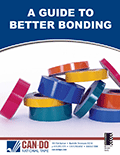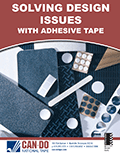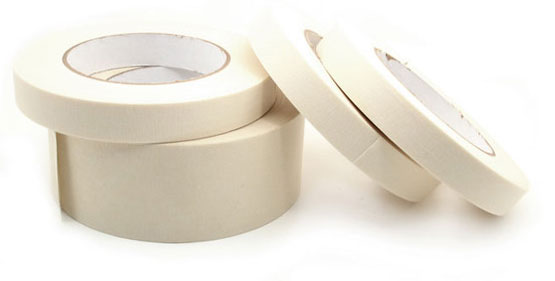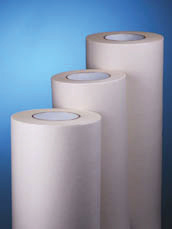Paper Tapes
Paper tapes come with different grades while the adhesion value and thickness of the paper have to be adjusted according to application. Widely used for color separation and painting made by hand or by spray, furniture making, automobile, and aircraft painting, in appliance manufacturing, decorative glass making, powder coating, plating, and sandblasting.
We market 4 distinct varieties of paper tapes:
Why Paper Tapes?
Paper tape comes with different grades while the adhesion value and thickness of the paper have to be adjusted according to application. Paper tape is widely used for color separation and painting made by hand or by spray, furniture making, automobile, and aircraft painting, appliance manufacturing, decorative glass making, powder coating, plating, and sandblasting.
The need for inexpensive paper tape became apparent when the automotive industry needed to mask off certain areas of their cars during the painting process. This prompted the development of masking tape and other saturated (impregnated) paper tapes. The two main types of saturated paper backings are crepe paper and flatback paper. The paper color can vary from white (bleached) to light tan (semibleached), and dark tan (unbleached). If a darker raw paper is used and a lighter shade of tape is desired, some TiO2 may be incorporated into the adhesive and/or saturant formula.
Saturants include natural rubber, styrene-butadiene rubber, and various water-based latexes. The first release coatings for saturated paper tapes were natural and synthetic polymers such as shellac, starch, casein, and nitrocellulose. Saturated papers, coated with pressure-sensitive adhesives, sometimes show a lowering of tack and adhesion on aging. In most cases, this effect is due to the tackifier resin migrating from the adhesive into the saturant. Unsaturated kraft paper tapes have been developed most recently.
The adhesive is usually a natural rubber type, but hot melt adhesives are also used. Silicone-based release coatings are used on the reverse of the paper carrier to keep the layers of tape from attaching to each other in the roll and to counter the tendency for delamination of the adhesive and kraft paper backing. This useful piece of information was provided by AIC Wiki.
Masking tapes date back to 1925. Masking tape was invented by Richard Drew after witnessing the frustration of auto bodyworkers as they used butcher paper to cover the cars they were painting. The ineffectiveness of butcher paper in auto-body applications made Drew search for better alternatives.
Kraft paper tape has a natural rubber based adhesive system that makes an excellent bond to most packing products and surfaces. Its tough backing remains strong under moist conditions and outdoor weathering is good. It is an approved packing tape by the U.S. Postal Service and UPS. Its typical applications include carton sealing, packing, splicing, freezer tape, and straight-line masking. It is also used in silk screening and picture framing.
 Download our free Guide to Better Bonding
Download Now
Download our free Guide to Better Bonding
Download Now
 Download our free Guide to Solving Design Issues with Adhesive Tape
Download Now
Download our free Guide to Solving Design Issues with Adhesive Tape
Download Now



